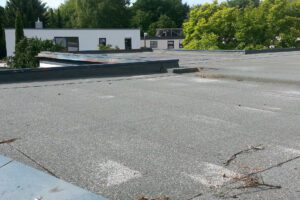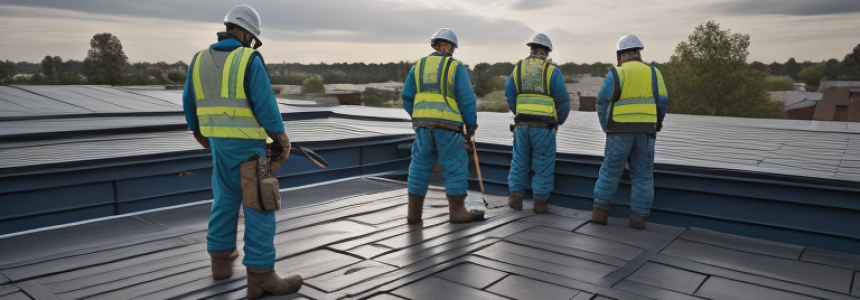

The unique structural design of flat roofs makes them distinct, bringing a modern aesthetic appeal to buildings. However, unlike their sloped counterparts, they require a meticulous maintenance routine to prevent potential issues such as water pooling and accumulation of debris.
A well-maintained flat roof is a long-term investment that pays off by reducing the likelihood of costly repairs. It not only provides a shield against the elements but also significantly impacts the energy efficiency and aesthetics of your building.
By investing time and resources in routine maintenance, you save substantially in the long-term. Preventative care minimizes the risk of severe damage, thus reducing the financial burden of major repairs or a complete roof replacement.
Before embarking on the maintenance journey, a thorough inspection is paramount to identify any existing or potential issues.
Regular surface analysis is vital to spot any irregularities such as cracks, blisters, or punctures that may escalate into more significant problems if left unattended.
Understanding the common issues associated with flat roofs such as water pooling, leaks, and membrane damage is crucial for effective maintenance.
A functional drainage system is the backbone of a healthy flat roof, ensuring water is efficiently channeled away.
Regular clearing of drains and downspouts is necessary to prevent blockages that could lead to water accumulation and subsequent damage.
Establishing a routine maintenance schedule is essential to keep your flat roof in optimum condition.
Adopting a regular cleaning regime helps to remove debris and prevent the accumulation of water and ice, which could lead to structural damage.
Routine removal of leaves, twigs, and other debris is crucial to maintain a clear drainage path and prevent potential damage.
Timely addressing of minor issues can prevent them from escalating into major problems that demand hefty repair costs.
Regular checkups for signs of wear and tear and addressing them promptly can significantly extend the life of your flat roof.
Different seasons bring different challenges for flat roof maintenance, and being prepared is key.
Ensuring your roof is prepared for winter is crucial to prevent snow and ice accumulation, which could lead to leaks and structural damage.
Regular removal of snow and ice during the winter months is essential to prevent excessive load and potential damage.
Summer brings its own set of challenges, including the risk of heat and UV damage. Regular inspections during this time can help identify and address issues early.
Implementing measures to prevent heat damage, such as applying reflective coatings, can help maintain the integrity of your flat roof.
While DIY maintenance is possible to an extent, professional assistance is indispensable for thorough inspections and addressing complex issues.
Knowing when to call in professionals is crucial for maintaining the structural integrity and functionality of your flat roof.
While professional inspections and repairs come at a cost, they are a worthy investment that can save you money in the long-term by preventing major issues.
Weighing the pros and cons of DIY versus professional maintenance is essential to make informed decisions regarding your flat roof care.
DIY maintenance can save money initially, but professional maintenance ensures a thorough inspection and repair, which can prevent costly problems in the future.
Whether you opt for DIY or professional flat roof maintenance, making an informed choice based on the condition of your roof and your skills is crucial for effective flat roof maintenance.
A comprehensive flat roof maintenance checklist is a valuable tool for every flat roof owner. By adhering to a regular maintenance schedule, addressing issues promptly, and seeking professional assistance when necessary, you can significantly extend the lifespan and functionality of your flat roof.
How often should I schedule professional inspections for my flat roof?
What are some signs that my flat roof needs professional attention?
Is it cost-effective to have a regular maintenance schedule for my flat roof?
How can I prepare my flat roof for the winter months?
Can I apply a reflective coating to my flat roof to reduce heat absorption during summer?